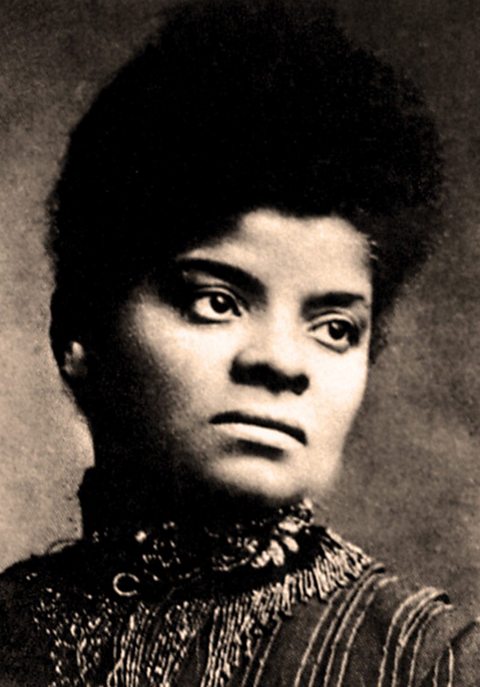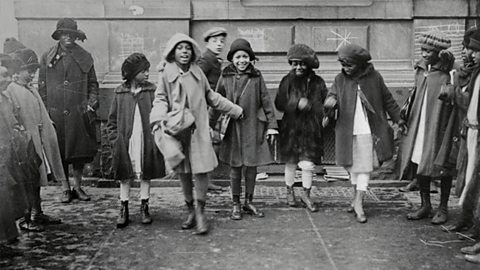The experiences of African Americans
Slavery was abolished in America via the 13th amendmentA change made to the US Constitution after it came into force in 1789. in 1865. African Americans were given citizenship in 1868, and in 1870 African American men gained the right to vote. However, laws, the justice system, social customs and violence continued to be used against African Americans, denying them full access to these rights and freedoms.
Segregation
The southern states
There were many Americans who believed in white supremacy The racist belief that white people are superior to people of other races. and refused to see African Americans as equals. Black Americans in the southern states suffered more discrimination than those in the north due to what were known as the Jim Crow lawsThe laws that introduced segregation in the US South (the laws that kept black people and white people apart). These laws enforced segregationThis meant that white people and black people had to live separately. The areas of society affected by segregation included churches, hospitals, theatres and schools. which meant that white people and black people had to live separately. This meant:
- African Americans could not use the same facilities as white Americans
- despite being citizens, African Americans were segregated in the US military
- the justice system protected the rights of white Americans and maintained segregation
- sharecroppersFarmers who had to pay to use land by giving a proportion of their produce to the owner. in the South were economically exploited and kept in poverty
It was difficult for African Americans to change these laws as they were restricted from voting in elections. Barriers were put in place to prevent them voting and gaining political representation and power. For example, to vote a person had to pay a poll tax. As many African Americans were too poor to pay the tax, they were unable to vote. Proof of the ability to read was also necessary, and reading the difficult extracts in the provided texts was difficult for those with low literacy levels, which was also a result of thier poor living conditions.
These barriers could also cause difficulties for poorer white Americans. However, in seven states, voters could be exempt if their ancestors had held the right to vote before the American Civil War (1861-1865). This so-called grandfather clause in effect only applied to white people, as before the war most African Americans were enslaved and had no voting rights.
The northern states
African Americans migrated north in ever-increasing numbers in what became known as the Great MigrationThe movement of six million African Americans between 1916-1970 out of the rural south into the urban cities of the North and West. They settled in growing industrial cities, such as Chicago, Detroit and New York.
Even though the Jim Crow laws did not exist in the North, life was still hard for African Americans there. They faced discriminationTo treat someone differently or unfairly because they belong to a particular group. and exploitation. Due to a combination of racism and poor education, their work was often in low-paid menial jobs. Their wages did not match those of white people doing the same job. This meant that most lived in the poorest areas of the cities.
The Ku Klux Klan and racial terror
The Ku Klux KlanA white supremacist organisation that used violence and intimidation to target black, immigrant, Jewish and Catholic people. Its members believe, based on incorrect and unscientific ideas about evolution, that white people are superior and should therefore hold the power in society. (KKK) was a racist terroristSomeone who uses violence for political reasons, usually to spread fear. organisation. It began in the southern states at the end of the American Civil War to maintain white supremacy. It declined in the last decades of the 19th century, only to revive after 1915. This was partly due to the popularity of DW Griffithâs film Birth of a Nation, which was released in 1915. In the film the KKK is portrayed sympathetically.
Its membership surged after World War One, growing to around 5 million in 1925. Its members came from across America, and they openly paraded in the capital city of Washington, DC, in 1926. Most of its members were White Anglo-Saxon Protestants WASPsRefers to the group known as White Anglo Saxon Protestants. who believed in the supremacy of the original European immigrants to America, most of whom had been Protestant.
African Americans were typically the main targets of extreme violence from the KKK. Its members committed acts of intimidation, violence and murder. Jewish and Catholic people were also terrorised, attacked and murdered by members of the KKK.
Resistance and activism

One horrific form of violence used by the KKK and other white supremacists against African Americans was lynchingExecuting someone (usually by hanging) without a legal trial. Frequently it was done under the claim of an alleged offence, but without holding a legal trial. In most instances these brutal murders were not stopped or investigated by the police. In total, over 400 black Americans were lynched by the KKK throughout the 1920s.
There had been campaigns against lynching going back to the late 19th century, most notably by the activist and journalist Ida B Wells. She campaigned for a federalPart of the government of the USA as a whole rather than relating to an individual state. anti-lynching bill. This bill was not passed, but she helped to raise awareness of the injustice of lynching through her writings. In 1909 she became a co-founder of the civil rights organisation the National Association for the Advancement of Colored People NAACPThe National Association for the Advancement of Colored People was created in 1909 to eliminate race-based discrimination across the United States of America. which campaigned and pressed for African American equality.
Marcus Garvey and the UNIA-ACL
Another form of resistance came from affirming black pride and culture. For example, Marcus Garvey, a Jamaican man living in the USA, founded the Universal Negro Improvement Association and African Communities League (UNIA-ACL) in 1914. It created its own weekly newspaper to publicise its ideas, created businesses and held international conventions. At its peak in the early 1920s it had over 1,900 branches worldwide, with the majority in the USA.
Garvey encouraged African Americans to be proud of their African heritage. He believed that they should return to their 'rightful homeland' of Africa, where his aim was to start a new country. Garveyâs ideas were a huge inspiration for other activists in the 1960s.
The Harlem Renaissance

Despite enduring racism, segregation and violence, African Americans thrived and created cultures and successful communities. Harlem was a black district in New York. It became the centre of a cultural revival known as the Harlem Renaissance. It was a place where intellectuals, artists, musicians, poets and writers flourished. Black cultural pride, politics and activism also grew.
Jazz clubs like the Cotton Club in Harlem were very popular in the 1920s. Due to segregation laws, only white audiences were allowed. However, the performers were mainly talented black artists, including some of the most important jazz musicians, such as Duke Ellington and Louis Armstrong.